
Cube Puzzler Go
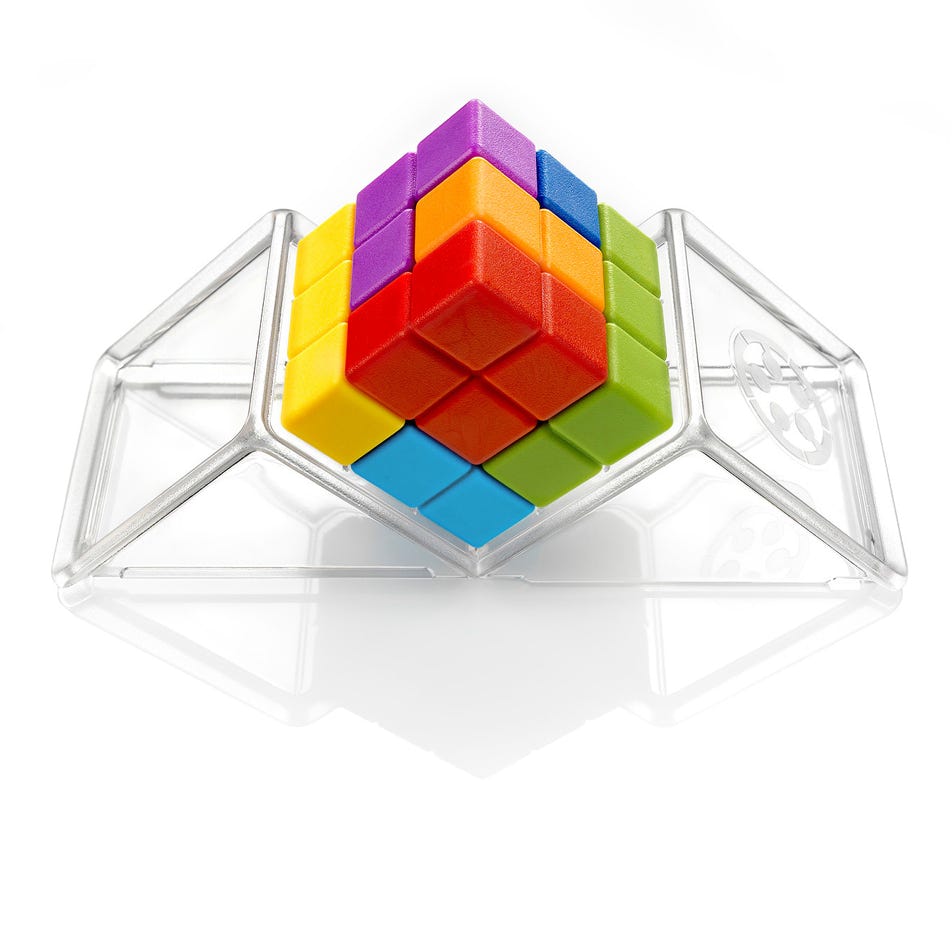
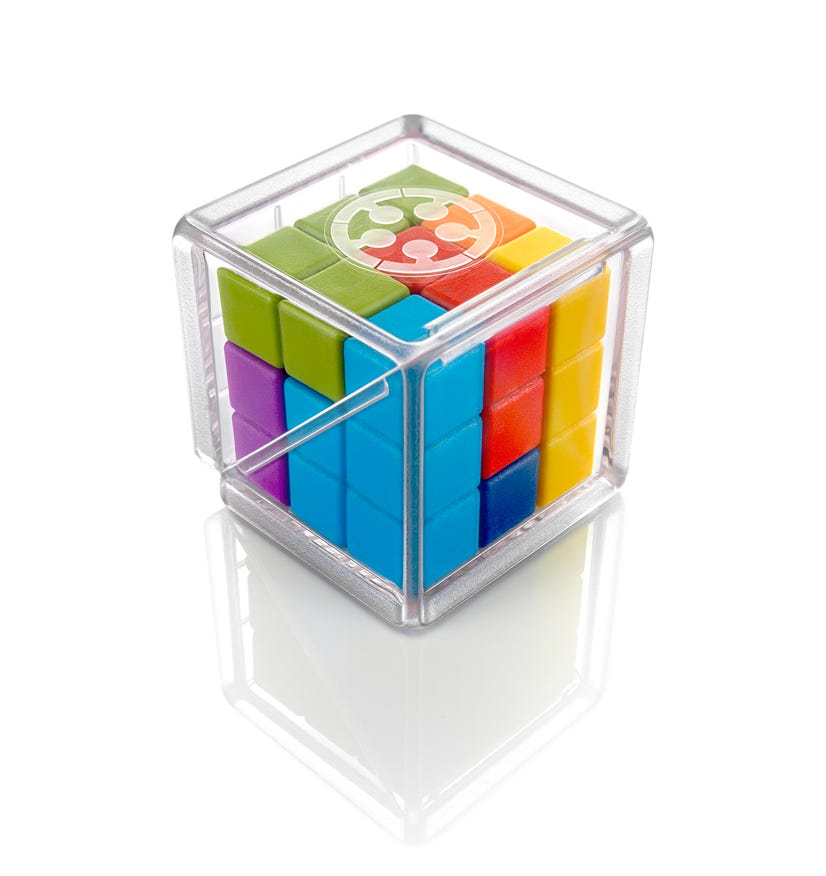
The story behind the creation of Cube Puzzler Go
Raf Peeters, January 2018
During the development of Cube Puzzler Pro (see previous page), I already started to work on a second version. Similar to all the IQ-puzzles I designed, this new version should be different enough from the PRO version and at the same time still be recognizable as a “Cube Puzzler”.
First I tried to find different ways to open a cube and transform it into a game board. One of the most obvious ways to do this, is by dividing it into 2 halves connected with a hinge. This results in a V-shaped game board, with surfaces angled 45°.
On a game board like this, it is also easy to build a stable cube, but not if the puzzle pieces are made of balls. So in this game the puzzle pieces are made of little cubes. Again the puzzle pieces are simple pieces, with pieces made of max 5 little cubes, all in the same plane. But this time you have 7 instead of 6 puzzle pieces.
Originally the challenges showed again the top view. But this concept was too similar to the one of Cube Puzzler PRO. For that reason I changed the concept, so that challenges now show the front and backside of your cube (so 2 opposing instead of 2 adjacent sides). This makes the challenges really different from the ones of the PRO version. You can never see these 2 sides at the same time, so either you have to rotate your game board to combine the hints of one side with the ones on the other side. Or you have to rotate everything inside your head, which is not that simple because left becomes right and visa versa. This reminds me little bit of Back2Back but in 3D now.
Harder challenges show more white squares. The color of those squares is not revealed and needs to be deducted by the player. The challenges from the master and wizard levels show only the frontside of the final cube.
This version is even easier to manipulate than the PRO version, because now you can manipulate the puzzle pieces from 4 sides. It also looks more straight forward and easier to understand. That’s why we suggest that people start with this GO version and why this game is for ages 8 and up, compared to the 10 and up for the PRO. But once you get used to the concept and puzzle pieces, the difficulty of the challenges of both Cube Puzzlers is very similar. Both games come with 80 challenges.
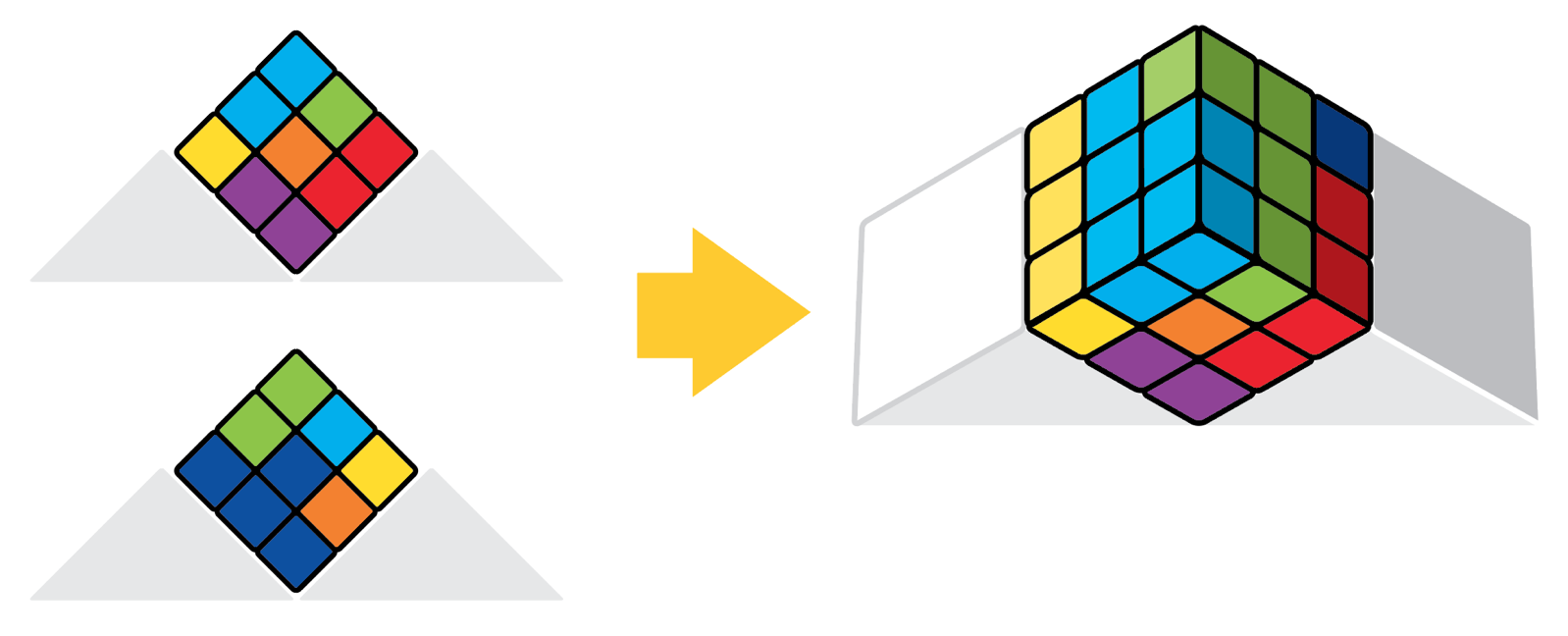
example of a starter challenge/solution of Cube Puzzler Go
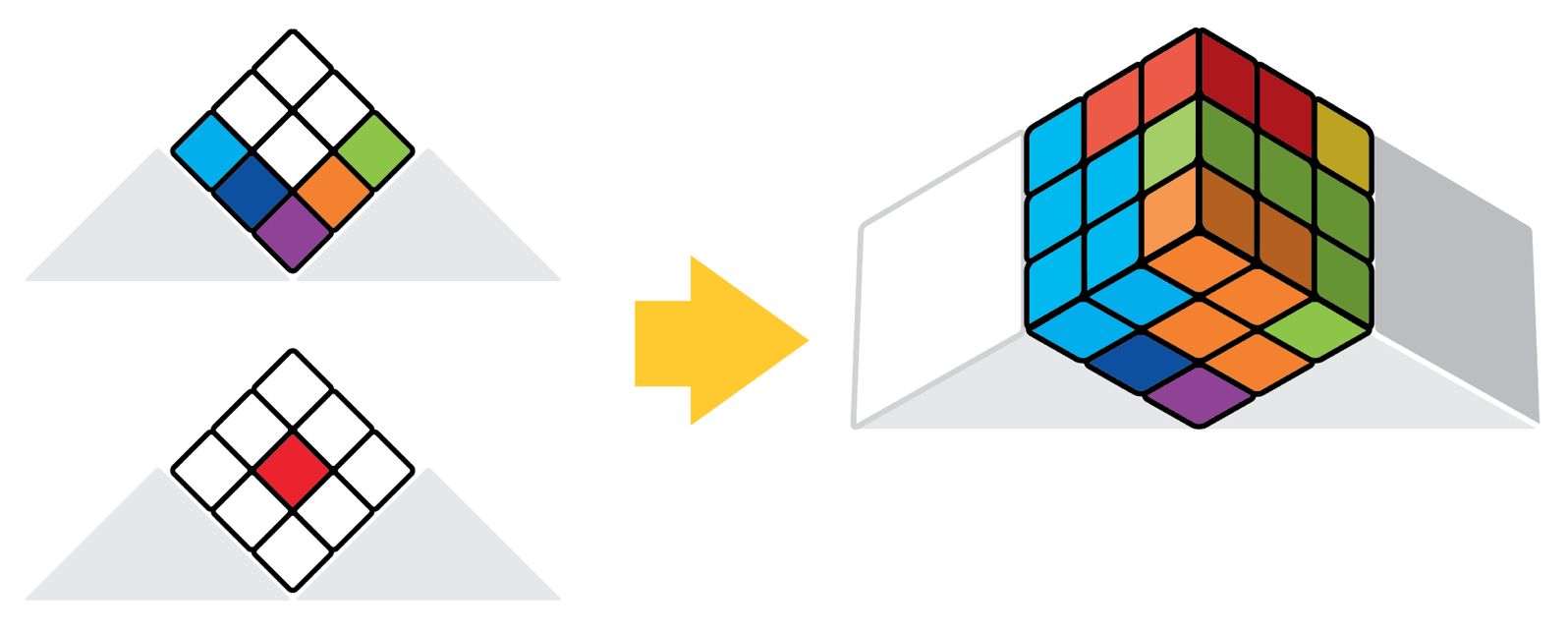
example of a wizard challenge/solution of Cube Puzzler Go
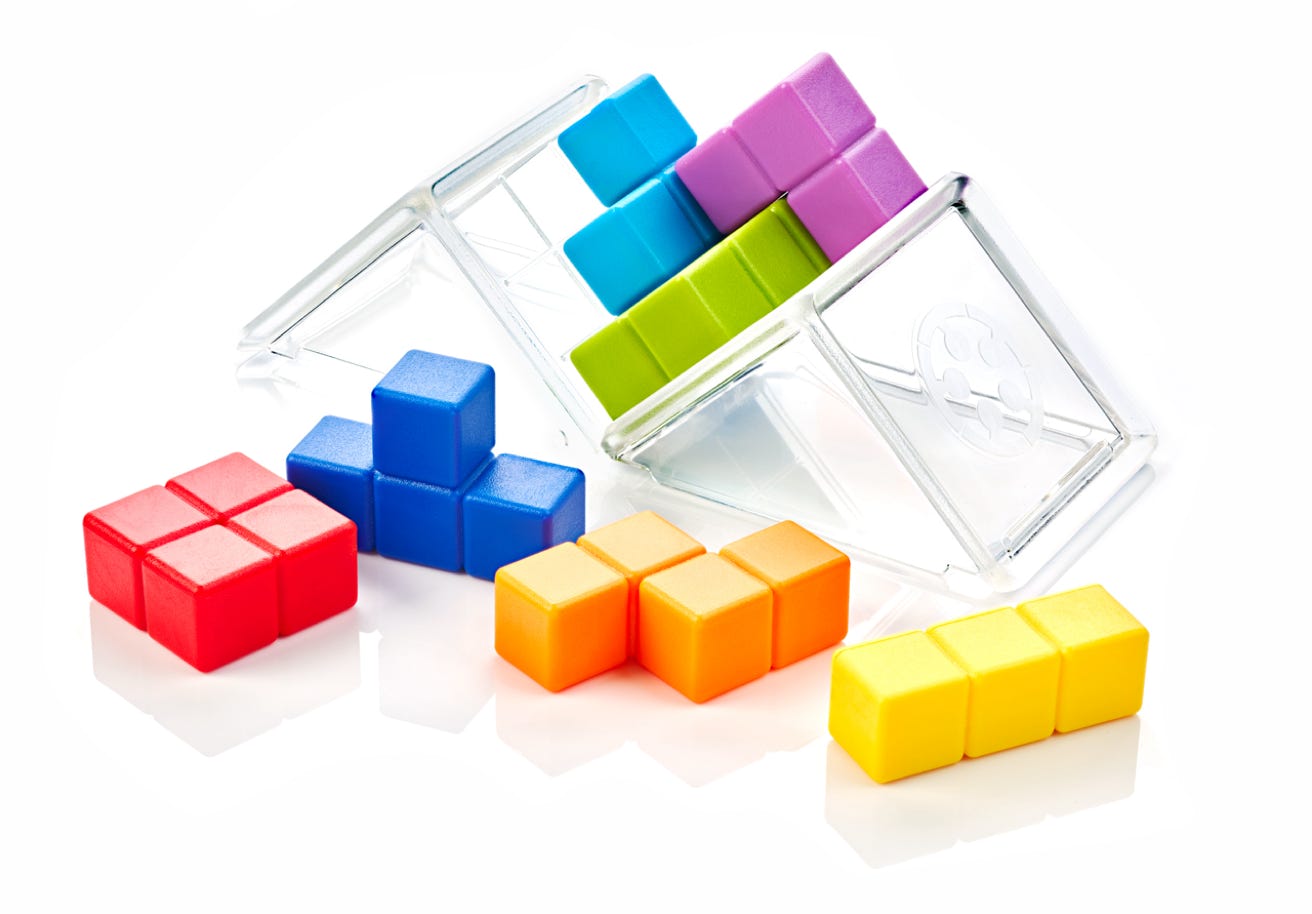
GAME RULES CUBE PUZZLER GO
Can you build a cube from the 7 colorful puzzle pieces? Put your spatial insight, logic and deduction skills to work as you create cubes to solve each challenge!
Cube Puzzler GO’s case doubles as an attractive tray to play the game.
Open the transparent cube to transform it from a storage case into a game board.
The game includes a challenge booklet with 80 real 3D-challenges and solutions.
How to play:
Before you start:
Open the transparent case and place it open on a table to create a V-shaped game board that is angled at 45°.
1) Choose a challenge:
- Starter challenges show the complete frontside and backside of the final cube.
- Junior and Expert challenges also show the front and backside, but some information about the colours in the final cube is missing (indicated by white squares).
- Master and Wizard challenges only show the front side of the final cube.
2) Place the 7 puzzle pieces on the transparent tray to create a cube. All 7 pieces must be used in every challenge.
3) You have found the correct solution when you have create a full cube with all squares the same colour as shown in the challenge. There is only 1 solution, which can be found at the end of the challenge booklet.
Hints
- When a challenge includes missing information about the colour of individual pieces, you may find the solution easier if you concentrate on the pieces you don’t see in the challenge, instead of only focusing on the pieces you can see.
- Build your cube from the bottom up. If information of the pieces at the bottom is missing, use logic and deduction to figure out which pieces belong there. If you try to build your cube from top to bottom, you will discover that you will not have enough hands to keep all puzzle pieces in place.
Website ©2024 Raf Peeters
Products and images: © Smart